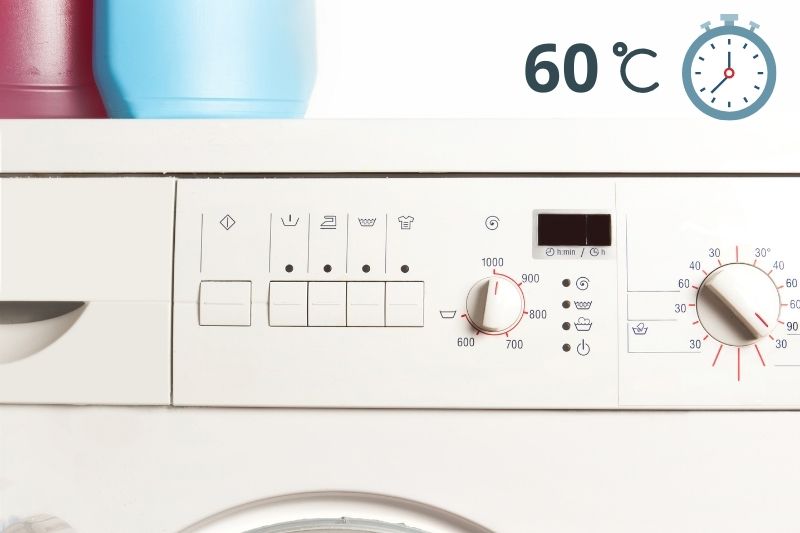Running a 60°C cycle on your washing machine will often take between two and a half and three and a half hours, depending on the model and the weight of your washing.
Modern washing machines take into account the weight of clothes when determining cycle lengths, so a full load of heavy cotton clothes will take longer washed at 60 degrees than a smaller load of lighter clothes.
Three and a half hours may seem like a very long time for your machine to be running, but this length of time is necessary in order for your clothes to be properly cleaned at a high temperature.
The reason that the machine takes so long to run a 60°C wash is that the cycle is designed to save as much energy as possible while also fully eradicating germs and stains from your clothes. If the cycle is running for longer then it will require less energy to heat less water.
A 60°C wash cycle is the most effective option if your garments are heavily soiled or stained, as well as if they are guaranteed to have large amounts of bacteria and viruses on them.
This temperature is recommended for bedding, towels and anything that may have been contaminated.
Pet bedding is also best washed at 60°C as if there are any insects like fleas or mites, as well as any lingering germs, they are more likely to be killed off by being at a hot temperature, as well as being exposed to water for an extended period of time.
One of the few disadvantages to washing clothes at a hotter temperature is that they are more likely to shrink if they are delicate or not designed to be run through a hot wash cycle. Many natural fibres like wools and yarns are unable to survive a hot wash without serious damage.
Another disadvantage to the 60°C cycle is that running costs are increased by up to half when washing with this temperature as opposed to a 30°C or 40°C wash.
The hotter temperatures are vital when looking to eradicate bacteria, but it is crucial to combine this temperature with a laundry detergent that is also designed to tackle stains and germs.
There are certain bacteria and viruses that are known to be resistant to hot water, so the detergent is key.
If you’re ever unsure about which temperatures are safe to use for specific garments your best course of action would be to check the labels in the items and make sure that they can be safely run through the cycle you are wanting to use.

An adventurous book lover with an animal obsession and a proclivity for travel and spontaneity. Used to passionately despise cleaning but has grown to enjoy it thanks to learning all the best tricks and shortcuts to guaranteeing a stress-free routine and a spotless home.






